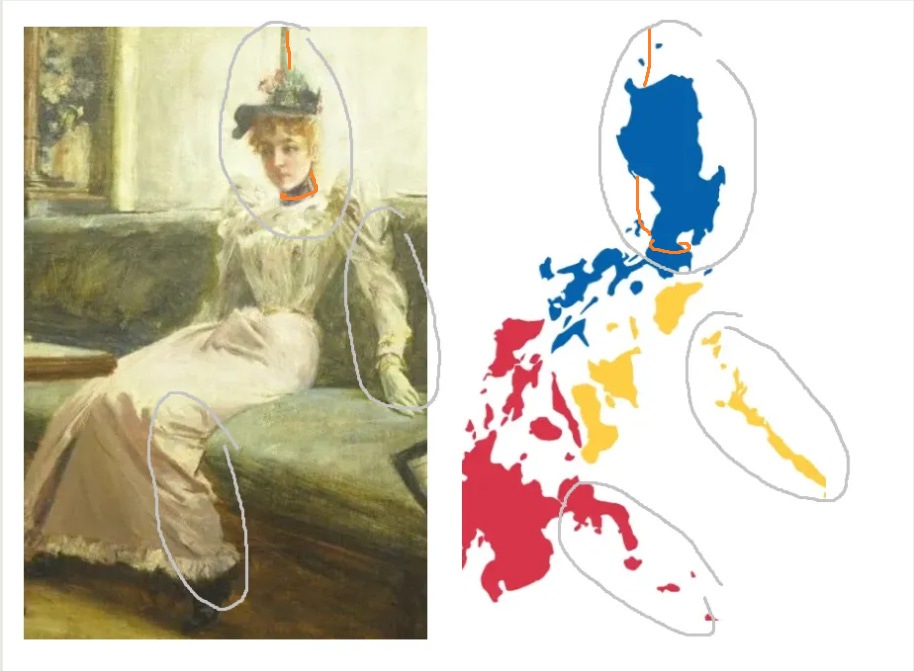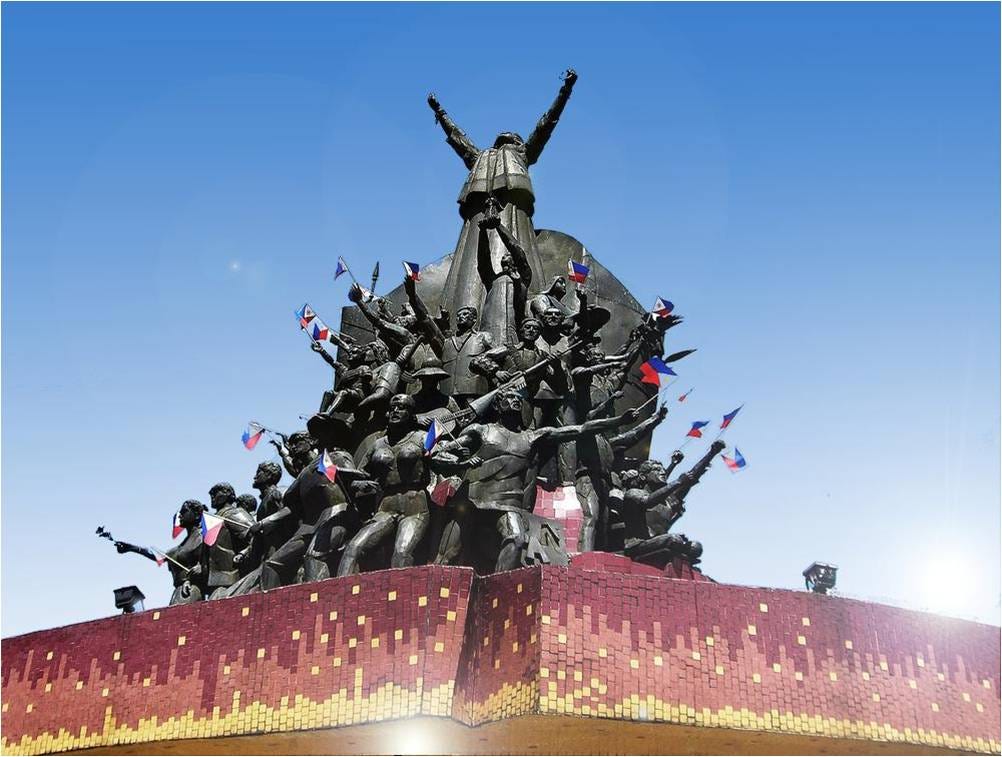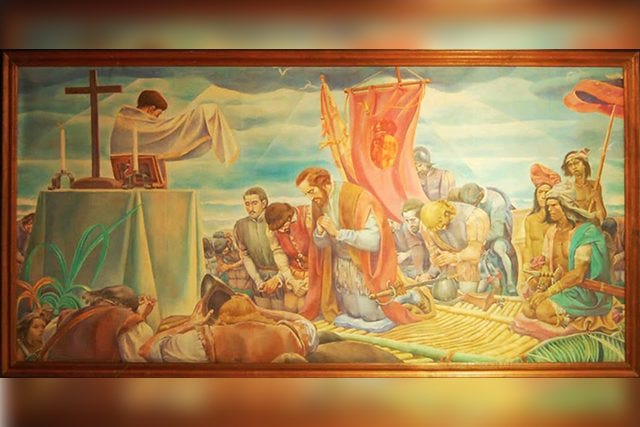Beyond the Image: Filipino Identity Through the Arts
A Multimodal Essay about Visual arts and Filipino Identity | Prelims Equivalent
Through the years, the visual arts have evolved around the world yet up until today, most of their purpose is still quite similar to how the visual arts were still used in early or ancient times. Arts were a form of personal self-expression of what the artists have gone through whether positive or negative expressions, a social or political movement, and these expressions create a unique connection between the arts and identity. Although the arts still haven’t been clearly defined, these are some facts that art was indeed used for such purposes.
So how can these expressions connect the arts and identity? Well, artworks are something tangible and seen, our identities or a place’s identity can be portrayed through visual things. Imagine your own personal room, the things seen in a room are different from one person to another subtly hinting at the owner’s character and identity, yet again, up to one’s interpretation of that room including your own interpretation to it.

For this essay, we aren’t going to talk about your room, but we’ll look over beyond the image, of what is seen in visual arts that talk about our identity, our very own Filipino identity.
The visual arts have been an essential factor in the formation and representation of Filipino identity. As a country with a diverse cultural background influenced by various traditions like indigenous, Malay, Chinese, and Spanish, the Philippines' art forms are a reflection of its rich and complex history. Filipino artists have utilized visual arts throughout the years to express their cultural heritage, share their narratives, and voice their opinions on social and political matters. These events and culture created through experience are what make up one’s identity, and for this, Filipino identity.
Let us look closer beyond the images by analyzing the next 4 artworks that explain what Filipino identity is through the use of the 4 planes of analyzing art according to Alice Guillermo’s essay.
1. Parisian Life by Antonio Luna (1892)
Oil on Canvas | 57 cm × 79 cm (22 in × 31 in) | National Museum of Fine Arts, Manila
The Parisian Life portrayed a scene inside a cafe in Paris with a prominent subject of a foreign woman dressed formally in pink sitting on a couch overshadowing 3 men with top hats in the background of the scene. Other than these are 2 glasses of beer and empty beer mug. There is an emphasis on the woman’s situation or experience in this café with her companions.
The subtle detail of beer mugs points out that the woman was accompanied by men as the woman was also identified as a prostitute which represented “fallen womanhood”. The woman was a symbolic image of a mirrored Philippine archipelago and the darkened neck, aligned to the mullion of the window behind her silhouetting a rope, as if the woman was strangled, portrayed the idea that the Philippines was under stress.
It was told that the 3 men were Juan Luna, Jose Rizal, and Ariston Bautista Lin in an expedition in Paris as he became renowned in Europe, during this time, Luna moved away from the usual dark mood of works while participating in Rizal’s movement. In relation to Filipino identity, the scene shows the 3 men embracing the Western lifestyle yet remaining Filipino at heart hence looking at the woman symbolized the Philippines. A subtle portrayal of one’s patriotism and national consciousness is common to Filipinos especially abroad or OFWs today. During the creation of this painting as well, was the rise of social upheavals in the country under Spanish colonization, it reflected the aspirations of Filipinos for freedom abroad yet battling the crisis of the country under the grasp of the Spaniards. The Spanish colonization was a big chunk of influence in the Filipino Identity, despite being “Spanish”, these were still significant influences that molded what is still the “Filipino” identity.
Below is another group of students’ interpretation that’s similar to most analyses of the said painting.
2. People Power Monument by Eduardo Castrillo (1993)
Steel Sculpture | 18m(59ft) | Epifanio de los Santos Ave, Mandaluyong, Metro Manila
The People Power Monument is designed in a pyramidal composition elevated in steps. Each tier of the pyramid composition are composed according from bottom to top, civilians with arms linked together, young and old with different background, and one towering figure of a woman with arms wide open towards the sky with shackles on the wrists that are unchained. It emphasizes on what looks like a community readily coming together for a purpose.
The unchained shackles represented freedom, with the people of different backgrounds around supporting together a protest fighting for freedom about an issue. 3 towering steel arches behind represent the 3 branches of government namely legislative, executive, and judiciary expressing the protest against the government.
Renowned steel sculptor, Eduardo Castrillo, an alumnus of the University of Santo Tomas created a monument in memorial to the revolution that happened around 1986. Due to the issues of martial law that caused chaos and human rights violation, people took it upon their hands to act and had a protest along the streets of EDSA thus the creation of this monument to commemorate the memory of the EDSA People Power Revolution that supported democracy further in the country battling and calling out the violations of the government. A call for peace and freedom in the country. Another event and artwork showcasing the Filipino’s perseverance amidst chaos and their love for the country’s overall peace. Up until today, the Filipino people continued to protest for their right to voice their concerns in a democratic country. The events during the Marcos regime reshaped Filipino identity, mostly in the creation of different “Filipino architecture” and social events such as martial law, and the revolution.
The video below shows a brief documentary of the events in the People Power Revolution.
3. Bayanihan by Fernando Amorsolo
Oil on Canvas | University of Santo Tomas Museum, Manila
The Bayanihan painting by famous artist Fernando Amorsolo shows a Filipino community helping together in carrying a “kubo”, or hut in daylight to transfer the hut from one place to another. The painting emphasizes a community helping the owner in transferring the hut.
The simple painting of a common practice in the Filipino community is the act of helping one in need. The concept of bringing a community together to help someone is the idea of “bayanihan”. The warm, golden light of the atmosphere set a sense of harmony and serenity in the act of helping a person, not forced to help/enslaved, but rather a voluntary act of kindness.
The creations of Fernando Amorsolo are usually realistic scenery of Filipino life and community. An artist who is famous for showing the daily life of Filipinos and the positive traits of Filipinos hence the warm bright atmosphere of most of his paintings. The Filipino identity showcased in most of his paintings is what brings Filipinos to a positive light from a global perspective. The kindness, hospitable, and simple lifestyle of Filipinos. The painting reflected the unity and peacefulness of the Filipinos through the act of Bayanihan. In present times, bayanihan may be shown at different events simply gathering together to help others commonly neighbors in need.
Here is a song to support the bayanihan trait of Filipinos that makes up our identity by Christian Dumaplin. In Fernando Amorsolo’s painting, he showed this helpful identity of Filipinos in a traditional way, in this song, it expounds where this trait can be seen in other things in a Filipino’s life. No matter who you are or what you are, as Filipinos, we can be trusted as we are generally helpful throughout the history of the Philippines.
4. First Mass at Limasawa by Carlos “Botong” Francisco (1965)
Oil on Canvas | 33 x 63.5 cm. (13 x 25 in.) | National Museum of Fine Arts, Manila
Last but not the least is the painting of Botong Francisco, the First mass at Limasawa. It shows a mass among the Filipino natives and Spanish soldiers. An emphasis on a religious event happening among the two communities.
In the said painting, the people are the Spaniards alongside Ferdinand Magellan in his exploration and discovery of the Philippine islands according to Antonio Pigafetta’s historical documents. The priest is Fr. Pedro Valderrama, who officiated the first mass during this historical event. Magellan, in the foreground with a sword piously bowing to the mass in prayer. Among the people in the painting, on the leftmost and rightmost sides are the natives including the chieftain Raja Kolambo was present during this mass. This event was referenced in Pigafetta’s writings including the details of an improvised altar using bamboo. The first-ever religious event that shaped and influenced the Philippines onwards.
The painting was created at a request by the Philippine government in celebration of the 400th year of Christianity in the country. As a country colonized by the Spaniards for the longest time, religion was one influence that significantly changed the country in the aspect of beliefs and values which are crucial in the decision-making of things such as the issues of LGBTQ in today’s time. Despite the controversies between politics and religion, the fact that such religious events had influenced the country became also the identity of Filipinos. Filipinos are religious, anchored in the teachings of Catholicism and Christianity, people began to celebrate and seriously took the scriptures, masses, and religious events yearly in the country from then up until today.
The Filipino Identity is still quite debatable as a concept due to the different issues that arose around it such as the influences that weren’t “truly Filipino” Yet overall, the complexities of historical influence and culture of the Philippines are things that made our Filipino identity unique. These are just some of the visuals that depict the Filipino identity. Filipinos had gone through a lot, throughout the struggles of different colonization, social, and political issues, Filipinos have also built themselves as a community, showing bayanihan, perseverance, and great hospitality.
Leave a comment and let us know your thoughts on the matter, are these artworks enough to show and explain Filipino identity? What is the Filipino identity?








